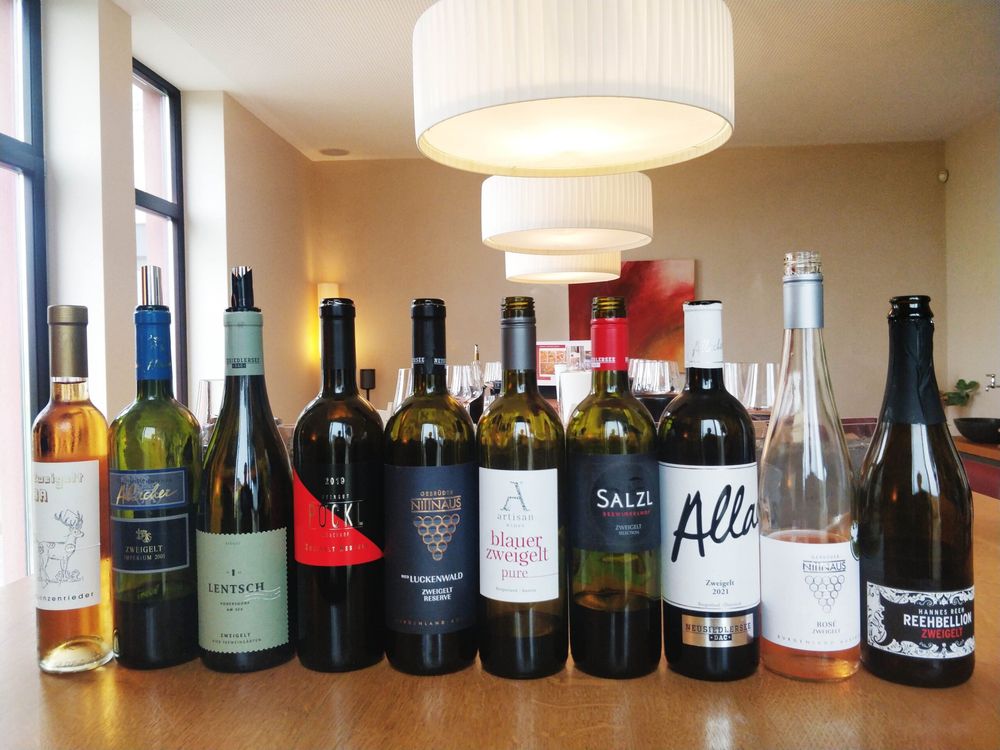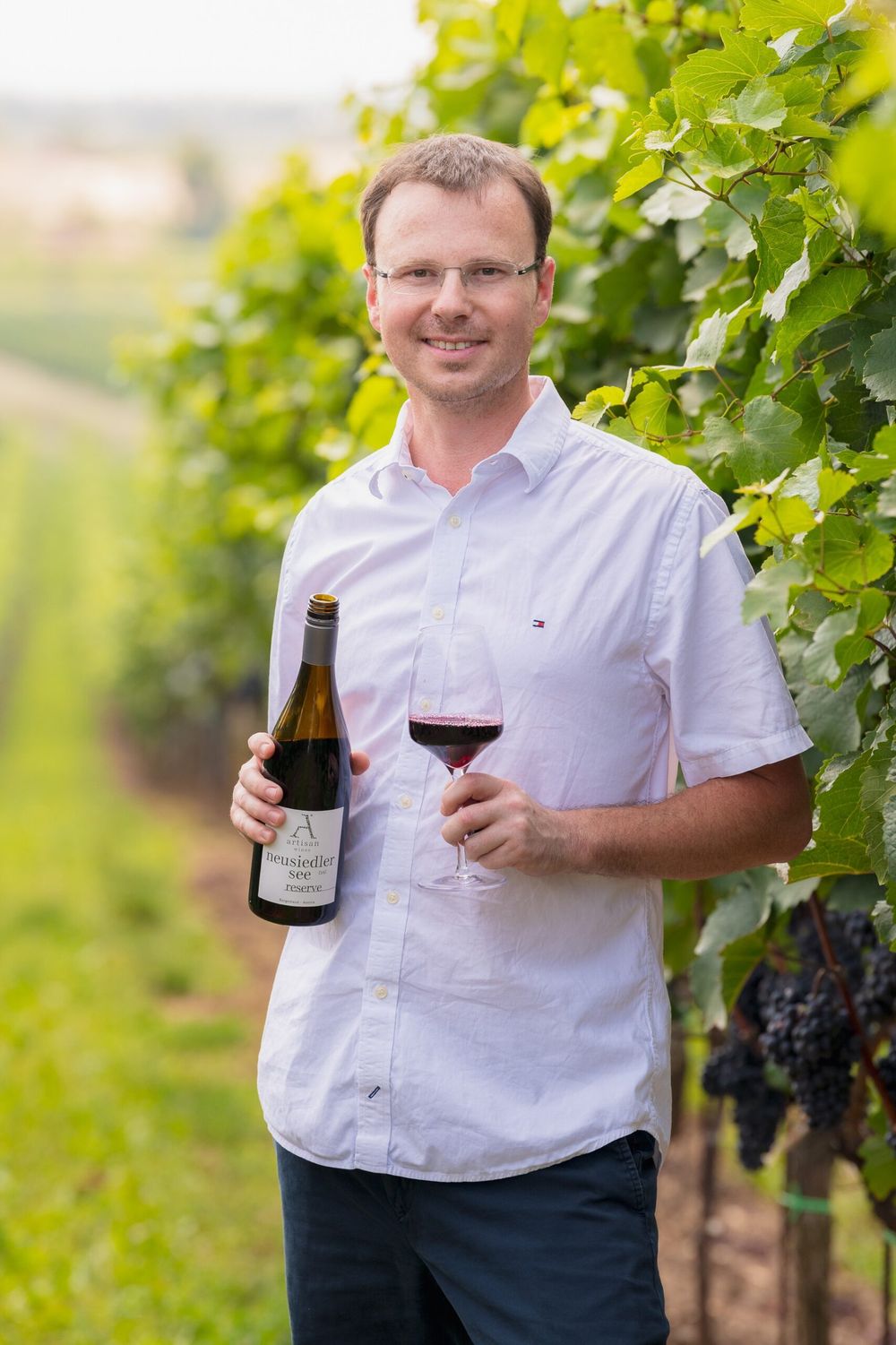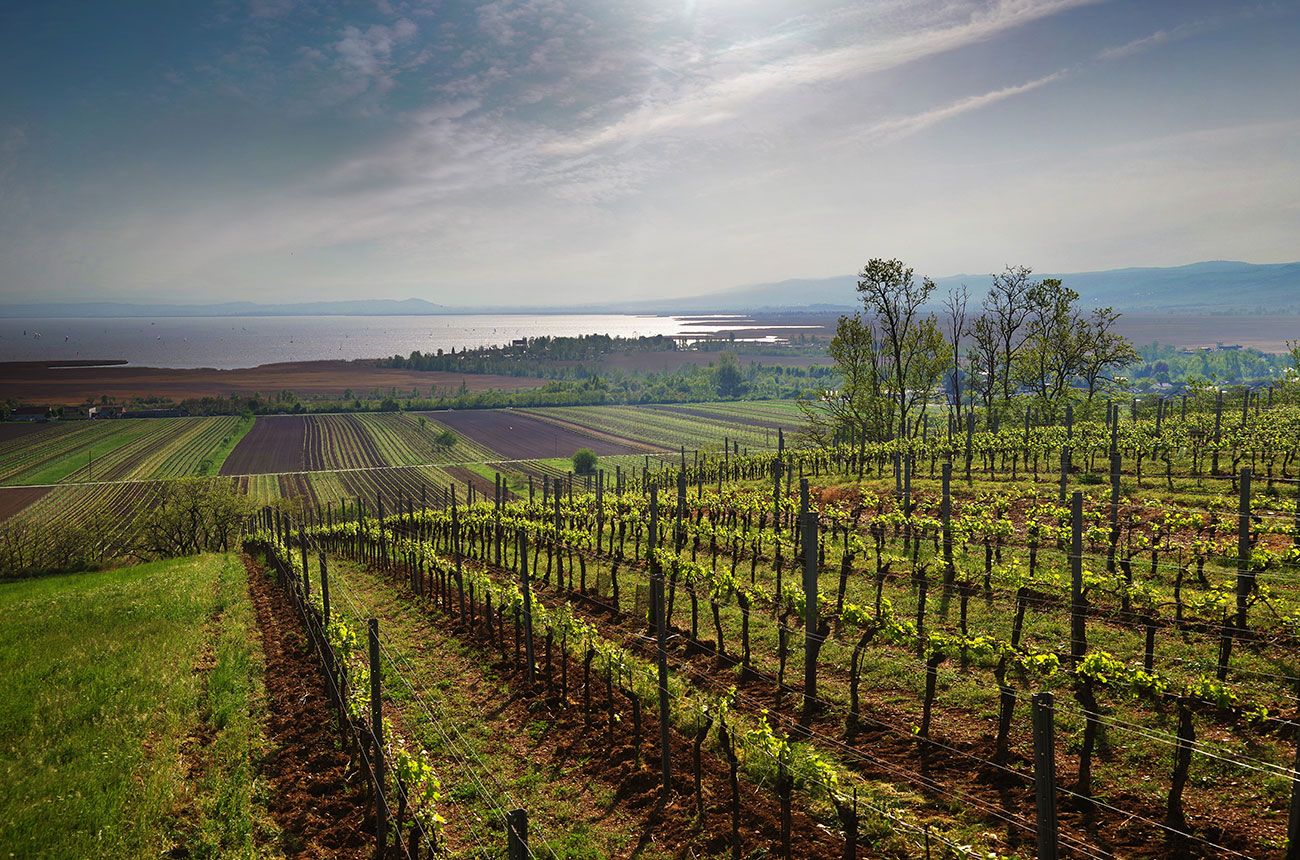“Throughout the region styles range from sparkling to sweet, orange and natural to apassimento. There is even rumour of blanc de noir still wines,” writes Robert Mason. Welcome to Austria’s Neusiedlersee DAC.
Rarity is often revered in the wine industry. So, the emergence of a new wine region in the Old World is worthy of more than just a ripple of excitement. Neusiedlersee is perhaps one of the most dynamic and versatile DACs within Austria. Marking its tenth year as, arguably, the country’s most progressive region, it demands closer inspection.
Located in the eastern-most area of Burgenland, nestled on the shores of the second largest salt-water steppe lake in Europe, Lake Neusiedl contains swathes of UNESCO World Heritage National Park low laying marshland. Windsurfers and water sports enthusiasts outnumber locals in the height of season by approximately three to one.
Within just 6,239 hectares, the region’s most successful and well-known grape is also Austria’s most planted red variety: Zweigelt. A young hybrid cross of Blaufränkisch and St. Laurent, Zweigelt was hitherto known, beyond the traditional Alpine markets, as an approachable, fruity and soft style red wine. However, scratching the surface deeper yields a profound view of the versatility, diversity and purity of both the Neusiedlersee DAC and the Zweigelt grape.

One of Europe’s youngest wine regions – Neusiedlersee DAC
Celebrating its centenary this year, Zweigelt’s humble beginnings in the laboratories of Klosterneuburg in 1922, the grape now finds its true prestige calling on the gentle hills of Neusiedlersee. It also provided a focal point for my visit to the southerly areas inbetween the towns of Gols in the northern part of the political district of Neusiedl-am-See down to Illmitz and Apetlon.
The DAC was created in 2012 but geographically wouldn’t look out of place in parts of Bordeaux’s historic Left Bank. Similar soils of gravel, clay and silty sand can be found in amongst dolomitic limestone. Coupled with quartz-rich pebbles, this specific terroir is the bedrock for the production of high-quality wines.
Aside from the largest concentration of Zweigelt grapes in Austria, Neusiedlersee cultivates the indigenous St. Laurent and Blaufränkisch alongside classic Bordeaux varietals of the Cabernets and Merlot. There is also a smattering of atypical international plantings of Chardonnay, Pinot Gris, Sauvignon Blanc, Pinot Noir & Syrah. Of course, traditionally planted Burgenland varieties of Welschriesling, Muscat Ottonel, Scheurebe and Müller-Thurgau are present there too, predominately for the production of sweet white wine styles. Botrytised wines are not uncommon in the region, Eiswein is much rarer and is being made less and less as the climate warms, yet the trend is mostly dry, still table wines.
For those producing Zweigelt focused wines, Managing Director for the DAC Torsten Aumüller says that this key varietal is “beyond fruit”. A statement that rings true only after immersing oneself in the culture, philosophy and vision of this emerging region.
Zweigelt in focus

Is there a new wine region around here? The UK wine trade on tour…
The first Zweigelt wine of the tour was certainly not one of conformity or conservatism, but a sparkling red style made by Hannes Reeh. On a global scale, sparkling red wine is niche at best. The “Reehbellion” NV set the tone for a voyage of discovery. Purity of fruit, progressive and fun. This blew any dubious pre-conceptions away at the first hurdle.
As I discovered, in little over a day, the versatility of this one grape variety can be immense. My scrawled notes from day one of the DAC Reserve single vineyard Ried Römerstein 2017 by Illmitz’s Alexander Egermann, included a simple equation: “Zweigelt = game changer”. Egermann explained that the ‘Classic’ denomination is, in essence, the meat and cheese of styles. With Aumüller adding “it is a food-friendly, fruit-forward, approachable wine with good international appeal”. The Reserve classification offers a serious style with generosity through aging.
“It copes better with exposure to CO2 and oxygen transfer in oak [than Blaufränkisch] and can produce more complex wines in time”, says Aumüller. It later transpired that this is also a grape that can reward ten-fold with patience.
Guided by the expertise of leading Master of Wine and ambassador for Neusiedlersee, Dirceau Vianna Junior, Zweigelt’s durability was evident when vertically tasting newly fermented 2022 vintage wines direct from tank through to pristine bottle-aged examples from 2001. All the while at our side were the extremely knowledgeable host of humble winemakers highlighting the versatility, diversity and longevity of their wines.
From seventeen wines, across seven producers spanning twenty-one vintages, it is hard to single out the outstanding wines. Largely because every wine is at a different stage of development and that each individual site is so unique, as it is often the case with areas such as Burgundy for instance. It is fair to say that all seven prodcuers from Weingut Kummer, Markus Iro, Preiner Wein, Artisan Wines, Salzl Seewinkelhof, Gebrüder Nittnaus and Seegut Lentsch have year-on-year produced exceptional Zweigelt wines.
Though all of this is not to say Neusiedlersee is just a one hit wonder. Throughout the region styles range from sparkling to sweet, orange and natural to apassimento. There is even rumour of blanc de noir still wines. “Rosé is increasingly being made throughout the region” adds Junior, very much backing the global trend. Excellent examples can be found from producers such as Nittnaus, Artisan Wines and Allacher.
Fringe varieties

Game changing wines says Robert Mason
If Merlot could be considered the main-stay of Bordeaux, Zweigelt is the corner pin of Neusiedlersee. To draw an obvious comparison to the fringe varieties of Bordeaux blends, Zweigelt is supported here in equalled quality by Cabernet Franc, Cabernet Sauvignon and, of course, by Merlot. Bringing an added depth and complexity from within.
Perhaps the most astounding of all the fringe variety wines has to be from Neukamp + Stadler with their range of natural wines under the label NESTOR. Made by Günther Neukamp using low intervention methods and specialising in Cabernet Franc and Pinot Gris. From the tiny cellar of this 40 hectare humble operation, both Neukamp and Junior expressed their excitement. The passion for these award-winning, ground-breaking wines was as intoxicating as the esters from the nearby open-top fermenters.

René Pöckl says he owes a lot to Bordeaux in his wines
Every producer visited recognises the importance of Bordeaux varietals and the role they play within the region. Such as René and Eva Pöckl’s openness about the influence of Bordeaux in his wines. Much of his blends are modelled in the image of Right-bank claret and it was clear to see when René generously compared his own wines to a Troplong-Mondot 2008.
Additionally, Artisan Wines’ Franz Schneider always aim to express the terroir, first and foremost. International varieties play a supportive role to the main Austrian grapes which really shows in the wines: purity, precision and attention to detail from vine to wine creates deeply complex wines in youth and with age. Such as the 2014 Zweigelt Reserve, nuanced with herbs, spices and restrained ripe fruits, hinting of the long-life it has ahead.
Cheers to the next decade…
As Neusiedlersee DAC opens its heart, soul and wines to wider markets, the question is ‘when’ not ‘if’ these wines will be popularised in the UK. The region has clearly demonstrated its quality, diversity and value as a statement of intent.
However, the main problem facing the region is, weirdly, the nation’s success of Grüner Veltliner. “The challenge our winemakers face in the UK is restaurants and suppliers tend to select just one or two Austrian reds from their current successful Grüner producers. Ninety percent of the time from Wagram or other more well-known areas” states Aumüller. He goes on to elaborate, when asked, about the recent ÖTW conference (see article published 18/09/22 by D. Kermode), that “Neusiedlersee is at a significant disadvantage to, say Kamptal or Kremstal, due to its relative lack of history and definite lack of altitude.”

Franz Schneider of Artisan Wines
The ÖTW currently holds dominion in a similar guise to that of Germany’s VDP association. All seven member DACs have both altitude and history to add to their caché. You could argue that Neusiedlersee is immediately on the back-foot. On one hand, this organisation can be seen as a force for good by promoting premium Austrian wine to the wider world. On the other, it is at risk of becoming elitist and alienating the many other top regions of the country, such as Neusiedlersee. Aumüller continues: “Is it any less a region because it’s only 117 meters above sea level? Quality is not defined by just two factors. We have unique terroir, and we have exceptionally unique high-quality wines”.
The importance of this incredible DAC is, perhaps summed up perfectly by Junior: “Neusiedlersee is an extremely important region for Zweigelt, one which above all has the ability to show a sense of place”.
The producers and where to find them:
Allacher Vinum Pannonia, Gols (Propeller Wines)
Artisan Wines (Stone, Vine & Sun)
Alexander Egermann (seeking UK representation)
Markus Iro (seeking UK representation)
Weingut Kummer (seeking UK representation)
Seegut Lentsch (Propeller Wines)
Nestor by Neukamp & Stadler (Propeller Wines)
Gebrüder Nittnaus (Friarwood Fine Wines)
Preiner Wein (seeking UK representation)
René & Eva Pöckl (SOMA Wines)
Hannes Reeh (Seeking UK representation)
Salzl Seewinkelhof (Seeking UK representation)
Georg Preisinger (Seeking representation)
Johannes Munzenrieder (Seeking UK representation)
































